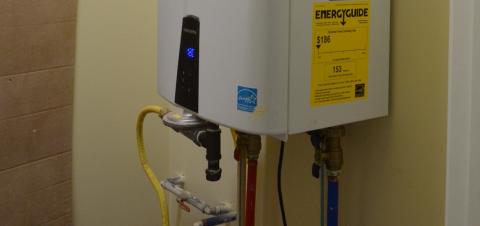
Gas Tankless Water Heater
Done correctly, gas tankless water heater upgrades can save significant utility expenses while providing unlimited hot water, longer life, and added safety by eliminating the potential for back-drafting of combustion gases.
Gas Tankless Water Heater Background

Water heating is the second largest energy expense in a home – typically 18% of the total utility bill. High-efficiency gas tankless water heaters eliminate heat loss from stored hot water in tank systems and use more efficient burners for significant energy savings. The combustion process is decoupled from the indoors with ducting for outside combustion air and exhaust air. This mitigates potential back-drafting of combustion gases that can occur with less efficient atmospherically vented gas tank water heaters. These systems also provide added durability compared to tank systems, which are to leaks.
Tips to Sell Quality Installed Home Improvements
Home Improvement Expert is a valuable tool for organizations committed to quality installed work. The following tips help optimize the value of this tool when selling home improvements:
Trust Matters: Inform homeowners how your work conforms to this world-class expert guidance. Recommend they visit the DOE website as evidence these are indeed official best practices.
Knowledge Matters: Take advantage of the Building America Solution Center as a resource for becoming an expert on these projects.
Clarity Matters: Tell prospective clients to contrast your expert-recommended best practices with other contractors.
Value Matters: Advise prospective clients to insist other bids also include these checklists to ensure equivalent quality work.
Message Matters: Showcase on your website and marketing materials that your company uses the highest quality best practices specified on HIE Checklists.
Experiences Matter: Provide visual evidence contrasting the difference between poor and high quality work such as infrared images; pre- and post-energy bills; short and long warranties; and simple charts and graphics depicting performance advantages.